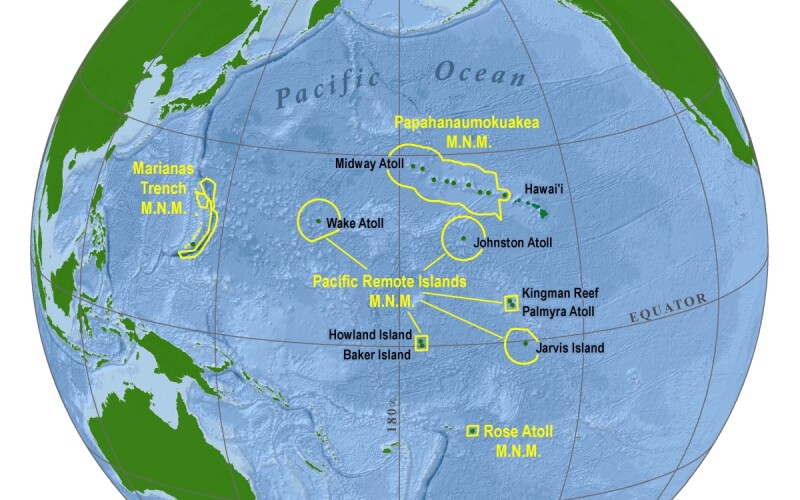An executive order issued by President Trump opens the Pacific Remote Islands Marine National Monument to fishing, asserting that U.S. environmental laws and regulation can adequately protect the islands’ marine ecosystem.
The move would allow fishing on more than 400,000 square miles west of Hawaii, declared a monument in 2009 by former president George W. Bush and expanded in 2014 by former president Barack Obama. It includes an array of reefs and seamounts around Wake, Baker, Howland, and Jarvis islands, the Johnston and Palmyra atolls and Kingman Reef.
U.S. Pacific fishermen and American Samoa officials and businesses have sought to lift restrictions on fishing, critical to the territory’s economy.
“As a result of the prohibitions on commercial fishing, American fishing fleets have lost access to nearly half of the United States’ Exclusive Economic Zone in the Pacific Islands,” according to the order Trump signed Thursday. “This has driven American fishermen to fish further offshore in international waters to compete against poorly regulated and highly subsidized foreign fleets.”
“The proposal to re-allow fishing in the Pacific Remote Islands Marine National Monument between 50 and 200 miles offshore – something your predecessor, Secretary Zinke, proposed the last time President Trump was in office in 2017 – is necessary to protect the United States fishing industry,” Radewagen said then. “Large swaths of the Pacific Ocean have been cut off from fishing access, and this process has been expanded upon again and again without scientific merit and without proper input from the communities and fishermen who are most affected.”
A parallel order issued by Trump Thursday calls for speedy action to reduce “overregulation” of U.S. fishermen, increase seafood production and develop a new seafood trade strategy to reduce U.S. dependence on imports.
The order also directs a review of all national marine monuments to determine “whether the opening of the monuments to commercial fishing would be consistent with the preservation of historic landmarks, historic and prehistoric structures” as required by law.
“Most American fish stocks are healthy and have viable markets. Despite these opportunities, seafood is one of the most heavily regulated sectors in the United States,” Trump’s order declared.
“Federal overregulation has restricted fishermen from productively harvesting American seafood including through restrictive catch limits, selling our fishing grounds to foreign offshore wind companies, inaccurate and outdated fisheries data, and delayed adoption of modern technology.”
Trump has moved aggressively to disable offshore wind projects opposed by the fishing industry, and the executive order clearly signals the administration wants to cut back on regulations.
“Within 30 days of the date of this order, the Secretary of Commerce shall identify the most heavily overregulated fisheries requiring action and take appropriate action to reduce the regulatory burden on them, in cooperation with the Regional Fishery Management Councils, interagency partners, and through public-private partnerships, as appropriate,” the order says.
Trump moved to liberalized fishing restrictions during his first term, notably to allow fishing in the Northeast Canyons and Seamounts Monument that had been declared by Obama. The ban on commercial fishing there was then reaffirmed by the Biden administration.
The new order directs the Commerce Department and Interior to review all marine monuments within 180 days an advised the administration where fishing access can be restored.







